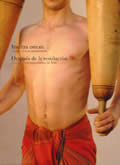Introducing an exhibition on contemporary Iranian art at Haus der Kulturen der Welt, “Neue Positionen iranishscher Künstler/Contemporary Positions of Iranian artists,” (2004) in Berlin, the director of the House, Hans-Georg Knopp, began by admitting that the world he still insisted on calling “the Middle East,” and as characterized by what he believed to be “Islam,” is “both exotic and fascinating, [and] yet at the same time dangerous.”
Exotic, fascinating, and (above all) dangerous: How could the director of any museum of modern art or biennale resist Iran as a subject matter?
Hans-Georg Knopp proceeded to propose that we need to have a “differentiated view” of the region, views that in his estimation replace those that come to us from the mass media. The necessity of this imperative, Hans-Georg Knopp insisted, has to do with the fact that these countries are much closer to the site of this exhibition in Berlin than its audience may have assumed: “This differentiated view is also essential,” he pointed out, “because many people from these countries are living here [here meaning in Germany and by extension in Europe], primarily as political migrants. Although the Middle East may be spatially distant, in a global-virtual world it is very near.”
“The Middle East,” wherever that is, is not “spatially distant.” It is where it is — or perhaps where it should be. Iran is not any more “spatially distant” than Germany. Or is it?
Whether as justification to a board of trustees, explanation to bureaucrats in superior positions of authority, or as curatorial policy, the proposal that: they may appear to be there, but they are in fact here too, and they are exotic, fascinating, and (above all) dangerous, very much (over) determines the nature and disposition of what is to be shown, exhibited, framed, formed, catalogued. This is to give a whole new meaning to what Bertolt Brecht meant by “alienation effect” (or a-effect). This is to use the distancing effect, the Verfremdungseffekt (or V-effekt) to distance the audience from any emotive involvement in the spectacle through narrative reminders of the alien and foreign disposition of the exhibition. In this case, “der Welt” in “der Kulturen der Welt,” is not really the world, it is the foreign, the strange, the distant — or as the director of the Haus der Kulturen der Welt, Hans-Georg Knopp, puts it, the exotic, the fascinating, and (above all) the dangerous.
(From Hamid Dabashi’s essay, “Artists without Border” in this colection)



 Columbia University
Columbia University Aljazeera
Aljazeera Middle East Eye
Middle East Eye Springer Palgrave
Springer Palgrave